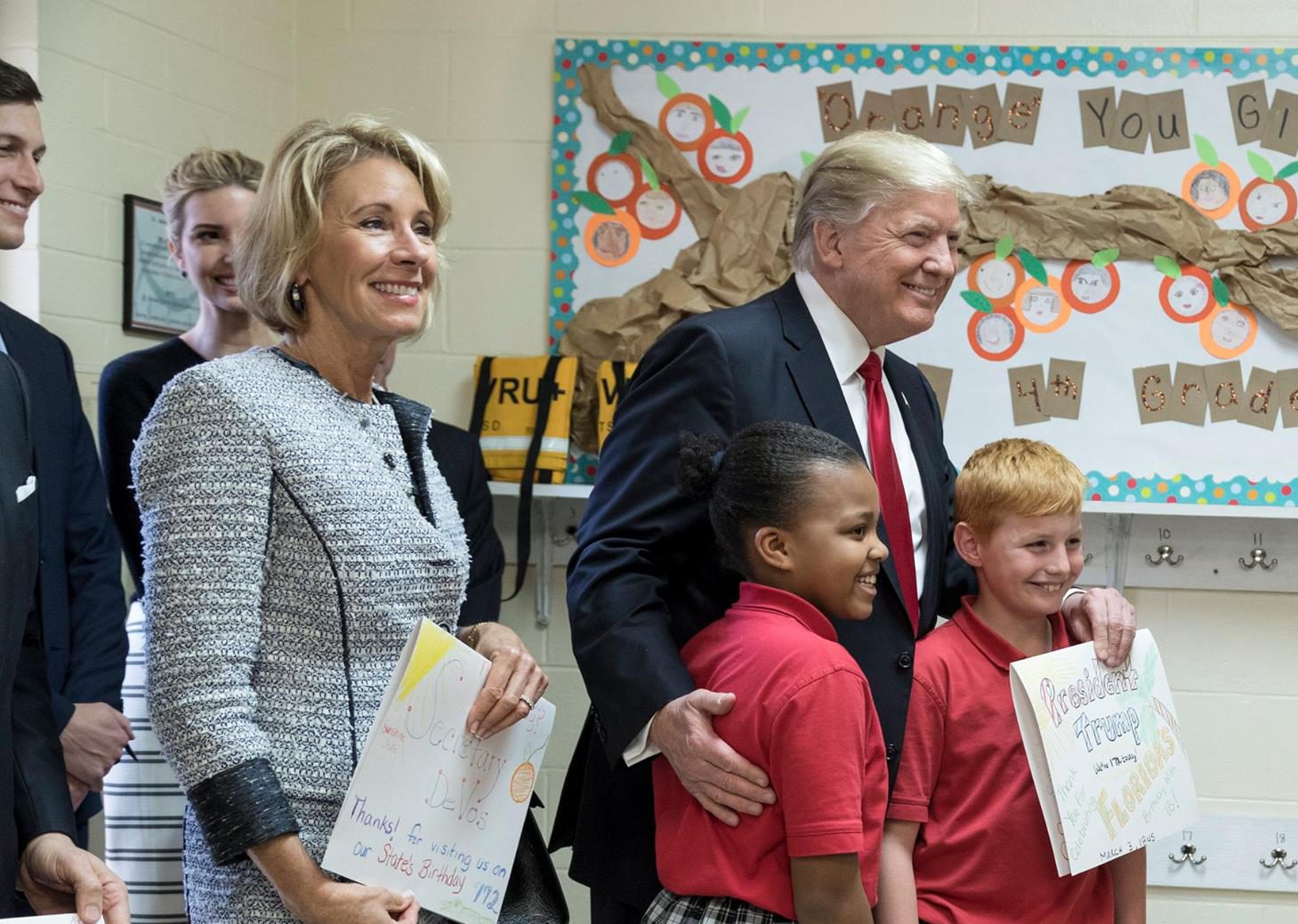Proposal would also end public service loan forgiveness.
Photo: Donald Trump and Betsy DeVos. (Courtesy of Wikimedia Commons)
Donald Trump’s education budget proposal was leaked to the press in near final form on May 17. The proposal would cut work-study funds in half, end the public service loan forgiveness program, and cut the Education Department’s budget by almost 15 percent.
Reid Setzer, government affairs director for Young Invincibles, put together the following “quick hits” on the budget. (They have been lightly edited).
Overall:
- Cuts $10.6 billion from federal education initiatives
- Calls for a net $9.2 billion cut to the department, or 13.6 percent of the spending level Congress approved last month
- Zeroes out $15 million program that provides child care for low-income parents in college (CCAMPIS)
- Career and technical education, which would lose $168 million, down 15 percent compared to current funding
- Cut $490 million, nearly half the budget from federal work-study that helps students work their way through school
Loans:
- End loan forgiveness for public service (PSLF), affecting 550,000 current enrollees and millions of potential enrollees
- Eliminate in-school sub loans
- Eliminate more than $700 million in Perkins loans for disadvantaged students (this eliminates the Perkins program, which is due to expire Sept 30, and a group of bipartisan Congressional folks proposed a bill to extend it another 2 years, yesterday)
The Trump/DeVos budget proposal guts the federal work-study program, ends access to public service loan forgiveness for millions of people, cuts almost $1 billion in Perkins loans, and that doesn’t even capture their dangerous plan to privatize our public K-12 schools.
Repayment:
- Single income-based repayment plan in place to replace the existing ones (not sure if this is the only plan, or this and maintains 10-year standard plan)
- Trump’s proposal — which makes good on a campaign promise — would raise the maximum payment to 12.5 percent of income, but shorten the payment period to 15 years. (Currently 10% for 20 years)
- The proposal is less sweet for borrowers who take out loans to earn advanced degrees. They currently pay monthly bills capped at 10 percent of income for 25 years. Under the new plan, they’d pay more (12.5 percent of income) for longer (30 years)
- No cost estimates for any of these changes
Pell:
- “Maintain funding” for Pell Grants for students in financial need (not sure what that means, if anything)
- Year round — The spending plan supports year-round Pell Grants, which allow low-income students to use the money for three semesters of college, instead of two. The administration also would increase available funds for year-round Pell by $16.3 billion over 10 years. (Unclear how the surplus fits in, and new money for Year-Round was already approved in previous administration)
- Max annual award would remain flat at $5,920, does not index it to inflation
Civil Rights / Equity:
- The staffing decline at the department’s Office for Civil Rights — which is dealing with a large increase in discrimination complaints — would be steeper.
- Trump is seeking $106.8 million for the civil rights office, unchanged from the funding level over the first half of fiscal 2017. But — thanks to a recent bump from Congress — the proposed total is $1.7 million less than the office is now receiving. The spending proposal would result in the loss of more than 40 of roughly 570 positions.
Let your legislators know that higher education is an essential public good that must be fully funded in order to prevent cost increases for students and working families who cannot afford it.
First, use this tool (link) to contact your federal legislators telling them this budget proposal hurt you, your family, and your campus.
Second, get on our email list and stay tuned for updates. We need your help to change minds here and in Washington.
This proposal is by no means final, but we need our representatives and senators in Congress to oppose it.

